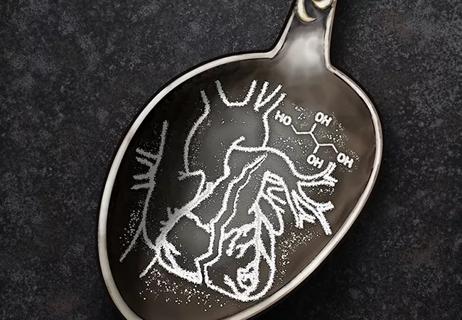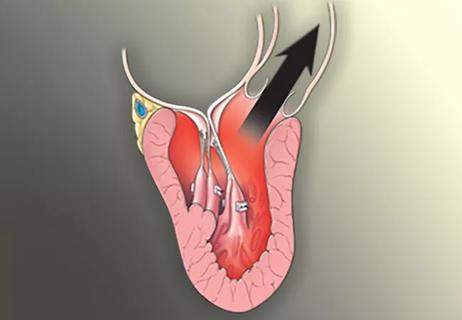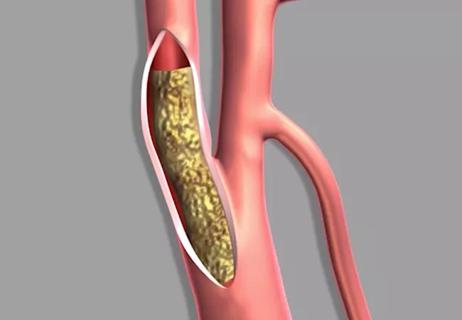Findings offer reassurance, clarify understanding of cardiorenal syndrome

Transcatheter aortic valve replacement (TAVR) for severe aortic stenosis (AS) usually results in improved or unchanged kidney function, even in patients with chronic kidney disease (CKD). That’s the conclusion of a new subanalysis of PARTNER trials published in the Journal of the American College of Cardiology (JACC) (2020;76:1410-1421). The findings may change how patients with both severe symptomatic AS and CKD are treated.
Advertisement
Cleveland Clinic is a non-profit academic medical center. Advertising on our site helps support our mission. We do not endorse non-Cleveland Clinic products or services. Policy
“This study provides practical guidance to physicians who may be reluctant to recommend TAVR to address severe aortic stenosis for patients with chronic kidney disease,” says the study’s lead author, Robert Cubeddu, MD, Chair of Cardiovascular Medicine at Cleveland Clinic Florida. “The findings indicate that aortic stenosis contributes to cardiorenal syndrome. Not only was there a high prevalence of chronic kidney disease in patients with aortic stenosis, but – more powerfully – TAVR was associated with improved kidney function in many cases.”
Most patients who undergo TAVR are elderly, with both impaired renal function and AS, and each condition may worsen the other. But the impact of TAVR on kidney function remains largely unknown.
Undergoing TAVR might exacerbate renal disease in multiple ways, including exposure to iodinated contrast and the potential for microembolization during delivery. On the other hand, cardiorenal syndrome brought on by severe AS may be corrected after TAVR, improving kidney function.
In the PARTNER 1 trial, in which 7.6% of patients had a serum creatinine level above 2 mg/dL at baseline, impaired estimated glomerular filtration rate (eGFR) worsened in 24% of patients following TAVR. This suggests that, for most patients, the improved hemodynamics brought about by TAVR may alleviate declining renal function.
The current study was designed by a multicenter team of investigators from the PARTNER trials of TAVR to evaluate evidence on the effects of TAVR on renal disease.
Advertisement
The analysis included patients from the PARTNER 1 (N = 2,526), PARTNER 2 (N = 1,024) and PARTNER 2 S3 (N = 1,640) trials. (PARTNER 1 included patients who were at high surgical risk or inoperable, PARTNER 2 included patients at intermediate surgical risk, and PARTNER 2 S3 included mostly patients at intermediate risk but also some at high risk or inoperable.) Mean age of the cohort was 84 years, and 45% were female.
All patients underwent TAVR between April 2007 and October 2014. Those with severe renal insufficiency (serum creatinine > 3.0 mg/dL) or end-stage renal disease requiring chronic dialysis were excluded from these trials.
At baseline, 91% of patients had CKD stage 2 or higher. All patients had severe AS, and all but three had heart failure symptoms classified as New York Heart Association functional class II or higher.
The primary endpoint was change in CKD stage from baseline to up to one week following TAVR. During that time, among the 2,892 patients for whom pre- and post-eGFR data were available, CKD stage either improved or remained unchanged in 89%.
Outcomes according to CKD stage were as follows:
Overall, progression to stage 5 occurred in 0.035% of patients. Among 3,546 patients for whom data were available, 70 (2.0%) required at least temporary dialysis post-TAVR. Mortality was 4.1% within 30 days post-TAVR.
Advertisement
“The evidence is strong that for patients with chronic kidney disease and severe aortic stenosis, TAVR is more likely to help than harm,” observes study co-author Samir Kapadia, MD, Chair of Cardiovascular Medicine at Cleveland Clinic.
The study authors draw the following major conclusions from this analysis:
An accompanying editorial in JACC written by three cardiologists not involved with this analysis concluded: “On the basis of the results of this study, it seems reasonable to recommend TAVR with judicious contrast use as part of a strategy to stabilize and improve kidney function in patients with progressive CKD and severe AS who are otherwise good candidates for the procedure.”
Advertisement
Advertisement

Blood test can identify patients who need more frequent monitoring or earlier surgery to prevent dissection or rupture

Study authors urge reevaluation of the sweetener’s safety designation by food regulators

Surprise findings argue for caution about testosterone use in men at risk for fracture

Findings support emphasis on markers of frailty related to, but not dependent on, age

Additional analyses of the two trials presented at 2023 ESC Congress

Prospective SPIRIT-HCM trial demonstrates broad gains over 12-month follow-up

Review of our recent experience shows it’s still a safe option

Machine learning may improve risk prediction and guide therapy